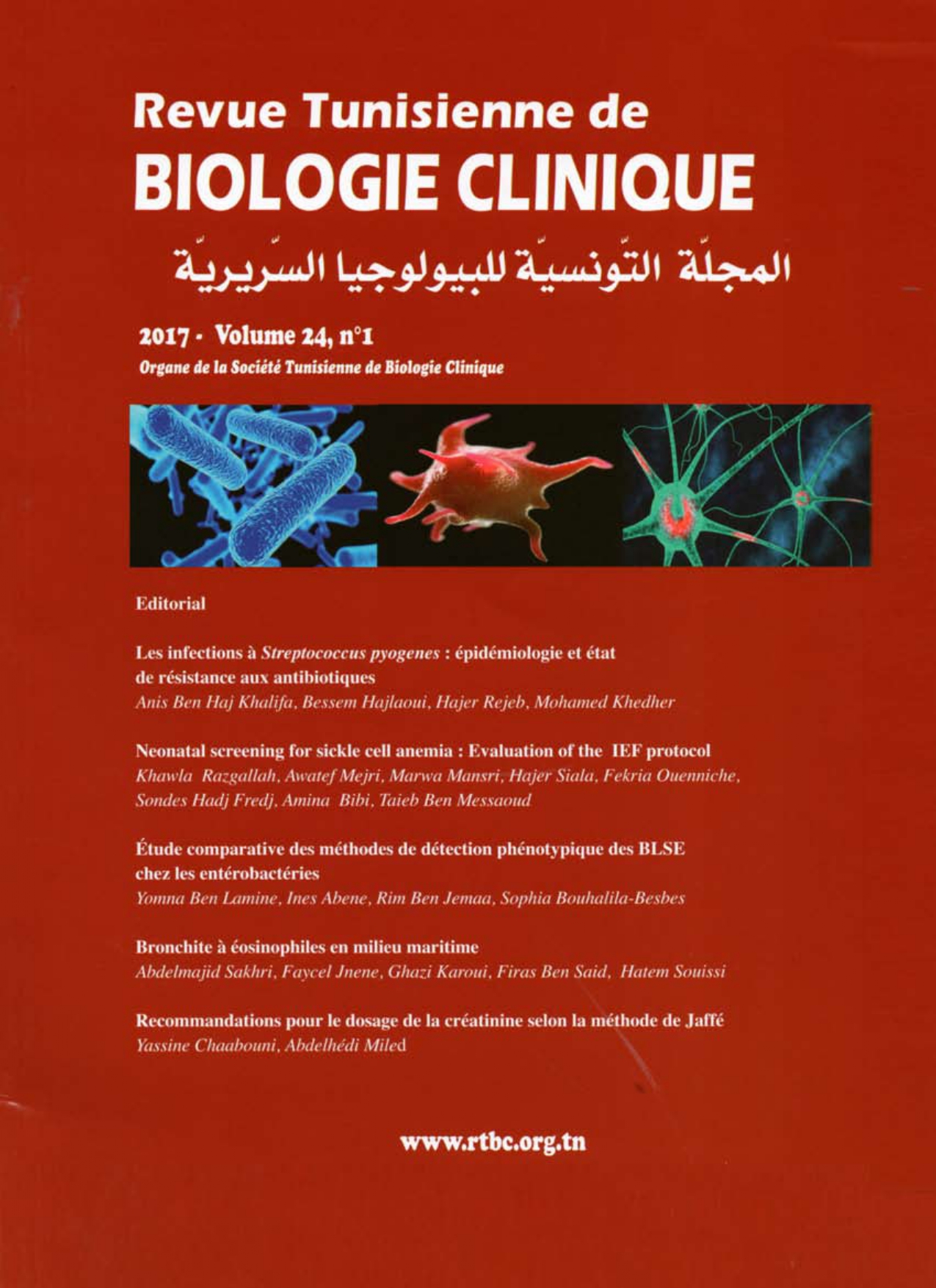Résumé
Introduction : S. pyogenes est une bactérie responsable d’infections suppuratives notamment les angines, mais aussi d’infections invasives beaucoup plus graves (septicémie, fasciite) qui sont de plus en plus fréquentes et ceci malgré la sensibilité importante de cette bactérie. Dans ce cadre nous nous sommes proposé d’étudier le profil épidémiologique des souches de S. pyogenes ainsi que leur état de résistance aux antibiotiques. Matériel et Méthodes : Cette étude a concerné toutes les souches S. pyogenes isolées à partir des différents prélèvements reçus au laboratoire de microbiologie du CHU Mahdia à visée diagnostique sur une période de 8 ans (2008-2015). Résultats : L’étude a concerné 163 souches de S. pyogenes non répétitives, le sex-ratio M/F =1,96. Parmi ces souches, 59 (36,2%) provenaient de prélèvements de pus profonds, 62 (38,4%) de prélèvements de pus superficiels, 12 (7,4%) de liquides de ponctions, 11 (6,7%) de prélèvements vaginaux, 15 (9,2%) de prélèvements de gorge, deux (1,2%) d’hémoculture et deux (1,2%) de liquide céphalo-rachidien. Le taux des infections invasives était de l’ordre de 46%. Aucune résistance vis-à-vis des ß-lactamines n’a été observée. En revanche, notre étude a mis en évidence un taux de résistance aux macrolides de 18,7 et de 9,7% respectivement pour l’érythromycine et la clindamycine. Toutes les souches étaient sensibles à la pristinamycine. Le taux de résistance à la tétracycline était de 48,7%. Concernant les aminosides, la rifampicine et les glycopeptides aucune résistance n’a été notée. Conclusion : Le recueil minutieux des données actualisées relatives à la résistance des S. pyogenes aux antibiotiques permettrait d’actualiser les stratégies thérapeutiques.

Ce travail est disponible sous la licence Creative Commons Attribution 4.0 International .
(c) Tous droits réservés Anis Ben Haj Khalifa, Bessem Hajlaoui, Hajer Rejeb, Mohamed Khedher 2017

